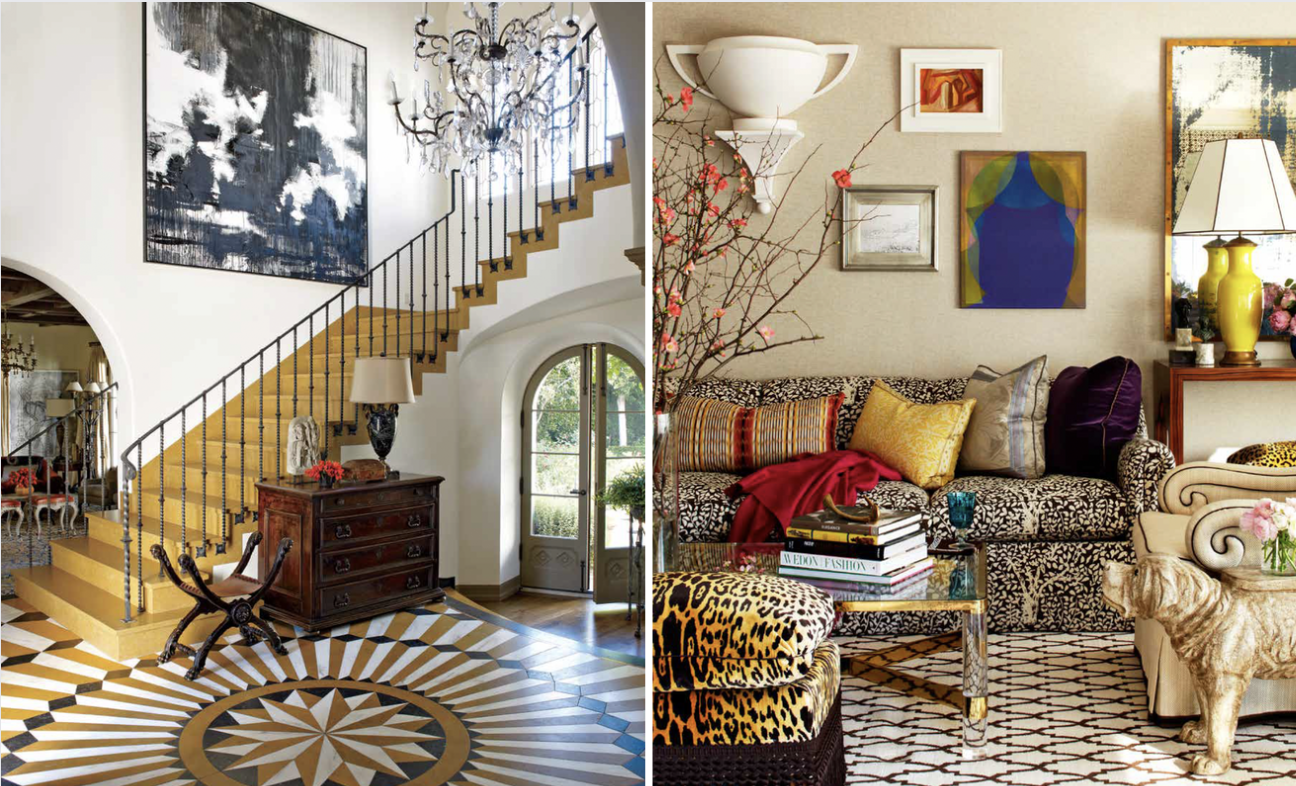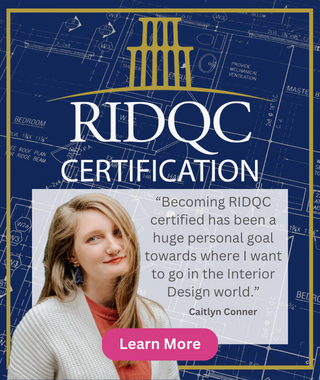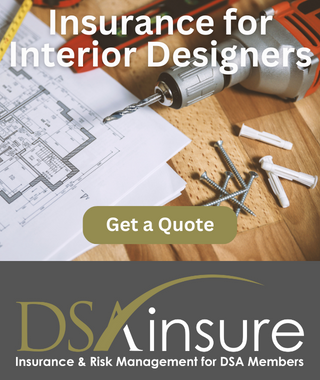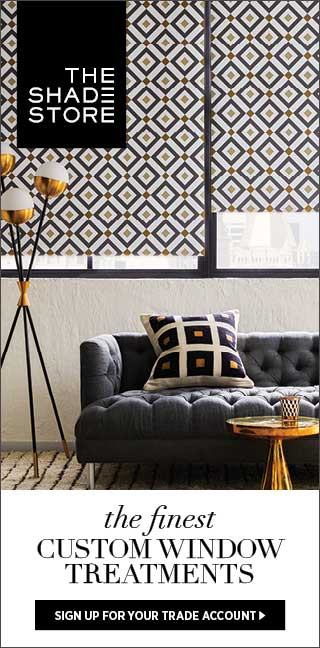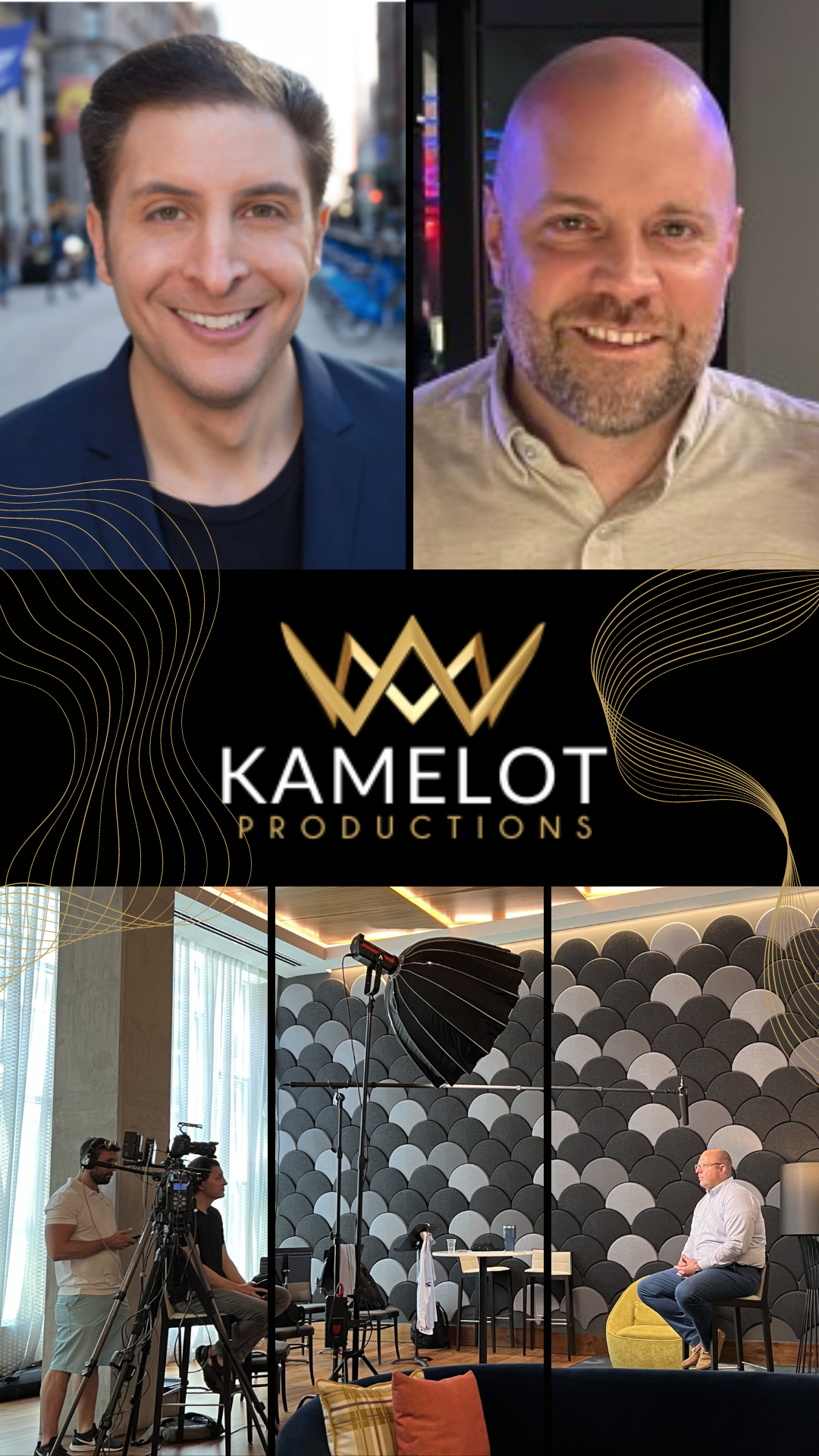 Video Production Can Help Enhance an Interior Designer’s Work
Video Production Can Help Enhance an Interior Designer’s Work
By Lindsay Field Penticuff
“Teamwork is so important that it is virtually impossible for you to reach the heights of your capabilities or make the money that you want without becoming very good at it.”–Brian Tracy, Motivational Speaker and Author
Seeing an interior designer’s work through lens of a video camera, and giving you a chance to explain your designed spaces on video, can be so incredibly beneficial to your business.
But, we understand that the idea of being on camera can be scary, uncomfortable, intimidating—all the things. However, it’s not something interior designers have to figure out on their own.
Producing an exceptional piece that depicts your work, your designed spaces, takes a team and lots of teamwork. You have the professional behind the camera, you have the individual interviewing you—asking all the right questions—you have someone editing the video, there is someone teaching you how to market with the use of videography, and so much more.
Working with a production team, especially an experienced one, can help bring out the best in you, your work and what you’re hoping to achieve with the help of video.
And it’s working with a collaborative team that will help continue to build success in your business.
We had the pleasure of interviewing the co-founders of Kamelot Productions recently, Arthur Kade and Joe DeCandido, about why they believe video can be so beneficial for interior designers and how they work as a team to make the production process as seamless as possible for their clients. They also produce DSA’s Life by Design podcast series.
“Joe and I are ‘people people,’” Kade says, “so it’s really all about understanding who we are working with and essentially customizing the best process to get them from point A to point B, with point A being the start and point B being creating fantastic content in the most powerful and best way possible.”
Learn more about their experience and expertise in the Q&A below.
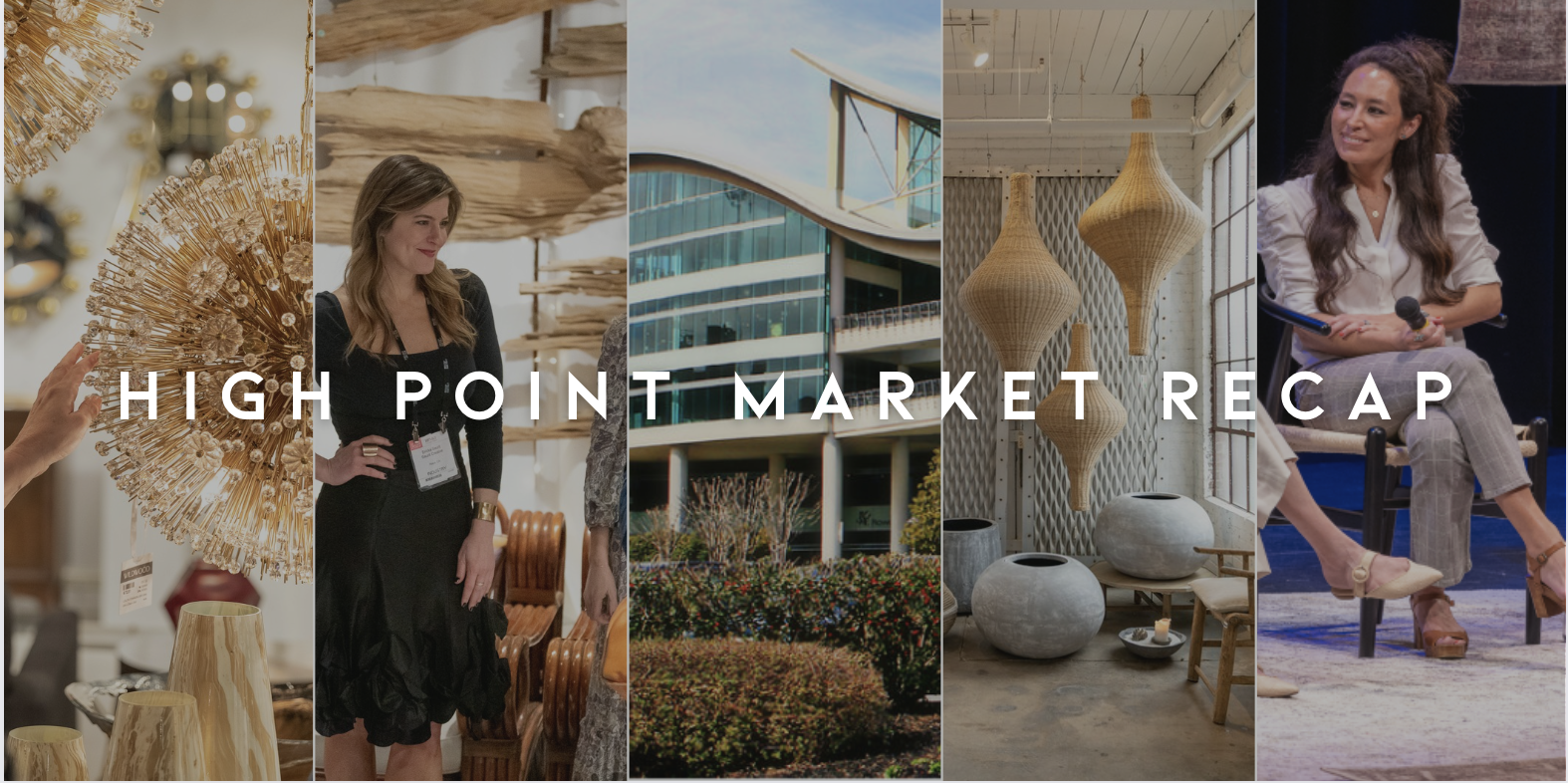
Spring High Point Market Recap: Where Business Meets Fun!
By Haley Hinson
“Meeting our DSA members at High Point Market was truly delightful! Not only did I immerse myself in the latest design trends, but I also had the pleasure of reconnecting with beloved designers like Vern Yip and Martin Bullard. High Point never fails to deliver exciting surprises!” –Natasha Younts, President, DSA.
High Point Market isn't just an event; it’s an experience. High Point Market is many things: a showcase of the best in home furnishings, a rich platform for education and networking opportunities, and a joyful homecoming for individuals in our industry. Between April 13-17, designers, industry professionals and enthusiasts alike converged upon High Point, North Carolina, for a whirlwind of inspiration, education and connection. If you missed it, fear not; we’ve got the highlights just for you!
Picture this: showroom after showroom bursting with meticulous design, thousands of new products vying for your attention and educational sessions led by industry veterans. That’s High Point Market in a nutshell. But it’s not just about business; it’s about having fun while you’re at it.
The Spring High Point Market showcased a kaleidoscope of home furnishings, from timeless classics to avant-garde pieces that push the boundaries of design. With more than 11.5 million square feet of showrooms, it’s a playground for design enthusiasts seeking inspiration at every turn.
But it’s not just about admiring beautiful furniture; it’s about cultivating a growth mindset. The educational opportunities at High Point Market are unparalleled, with seasoned industry voices leading discussions on the latest trends and innovations.
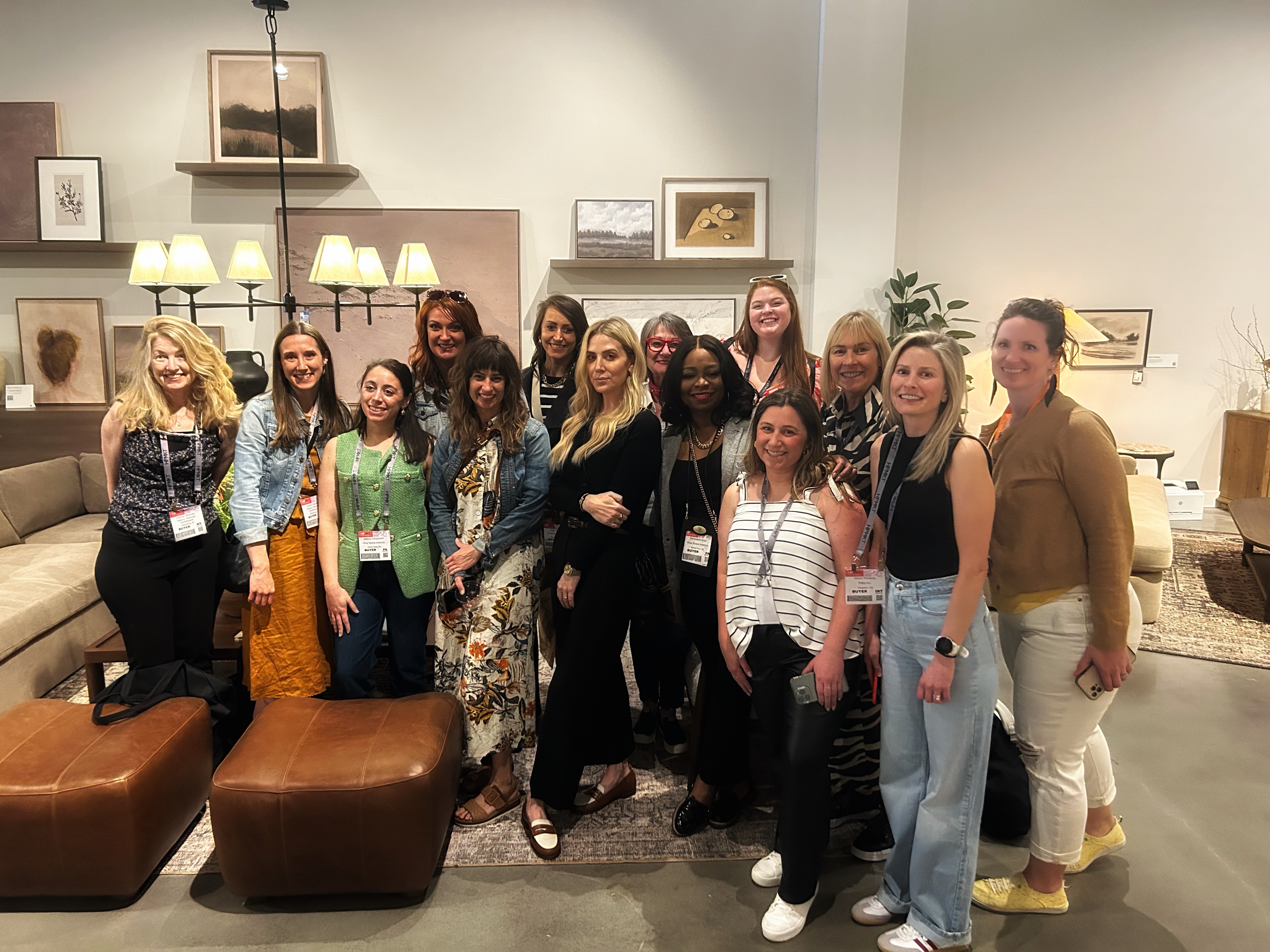
Insider's tour group with designer, Amber Lewis (center), tour guide/designer, Rasheeda Gray (right of center), and myself, Haley Hinson (back right)
Haley Hinson, DSA’s Marketing and Operations Coordinator, recounted, “As a newcomer to High Point Market, I was advised to take an insider’s tour, and I’m so glad I did. Through the curated tour, I was able to see a plethora of showrooms showcasing everything from upholstery to case goods, accessories, lighting and more. Walking through High Point Market, I was floored by its sheer size! But amidst the hustle, I found moments of connection, and chatting with fellow enthusiasts and industry pros gave me a whole new perspective on the art and business of design. All in all, my first High Point Market was a whirlwind of discovery, camaraderie and a newfound appreciation for the endless creativity in this industry.”
Networking isn’t just a buzzword at High Point Market, it’s a way of life. From formal events to chance encounters in the aisles, the market provides ample opportunities to expand your professional network and gain fresh perspectives.
And when the day’s business is done, it’s time to unwind. Live music, delicious food and plenty of memorable moments await, helping ensure your High Point Market experience is as enjoyable as it is productive.
One of the standout sessions at this year’s market was the Encore Keynote, “Designing a Business that Endures.” Design stars Joanna Gaines, Amber Lewis, Brigette Romanek and Leanne Ford shared their insights on building a resilient design-oriented business in today’s ever-changing landscape.
But the innovation didn’t stop there. Attendees also had an opportunity to explore the intersection of technology and design at events like “Transformative Tech: How Designers Are Using Technology for New Revenue Streams” brought to you by our friends at Mydoma.
Photographed left to right: Eoin Harrington, Caroline Simmel, Margie Kaercher, Buffy Ferguson, Courtney Collins and Laurie Laizure

Three designers, Jenna Gaidusek, John McLain and Nile Johnson, spoke on the importance of staying up to date in the ever-changing technology landscape. They spoke on the immense usefulness of Mydoma, along with discussing the use of AI and other innovative design packages.
DSA’s very own Laurie Laizure also hosted the panel “Furniture Showrooms Reimagined: New Revenue Streams for Designers,” featuring Eoin Harrington, Founder and CEO of MINE. These discussions left attendees inspired to harness the power of technology to drive their businesses forward.
Laizure, Founder of Interior Design Community, perfectly summed up her market experience with, “High Point Market is so much more than shopping! Where else can you meet and learn from the greatest minds in interior design, while also connecting with fellow colleagues and keeping yourself educated about the very best offerings there are in design worldwide?
High Point Market is the fashion week of furniture, and there is no better place to absorb and re-energize your creativity. I always tell designers to plan on networking with peers, attend educational sessions that they need for their businesses, capture content for social media, and scope out products for clients and think upsell and time of year. For example, during High Point Market, check out outdoor furnishing, lighting, rugs and accessories that your clients might like to use for refreshing.”
High Point Market isn’t just an event; it’s a celebration of design, innovation and community. Whether you’re seeking inspiration, education or simply a good time, it has something for everyone. So, mark your calendars for Fall High Point Market, and join us for an unforgettable experience!
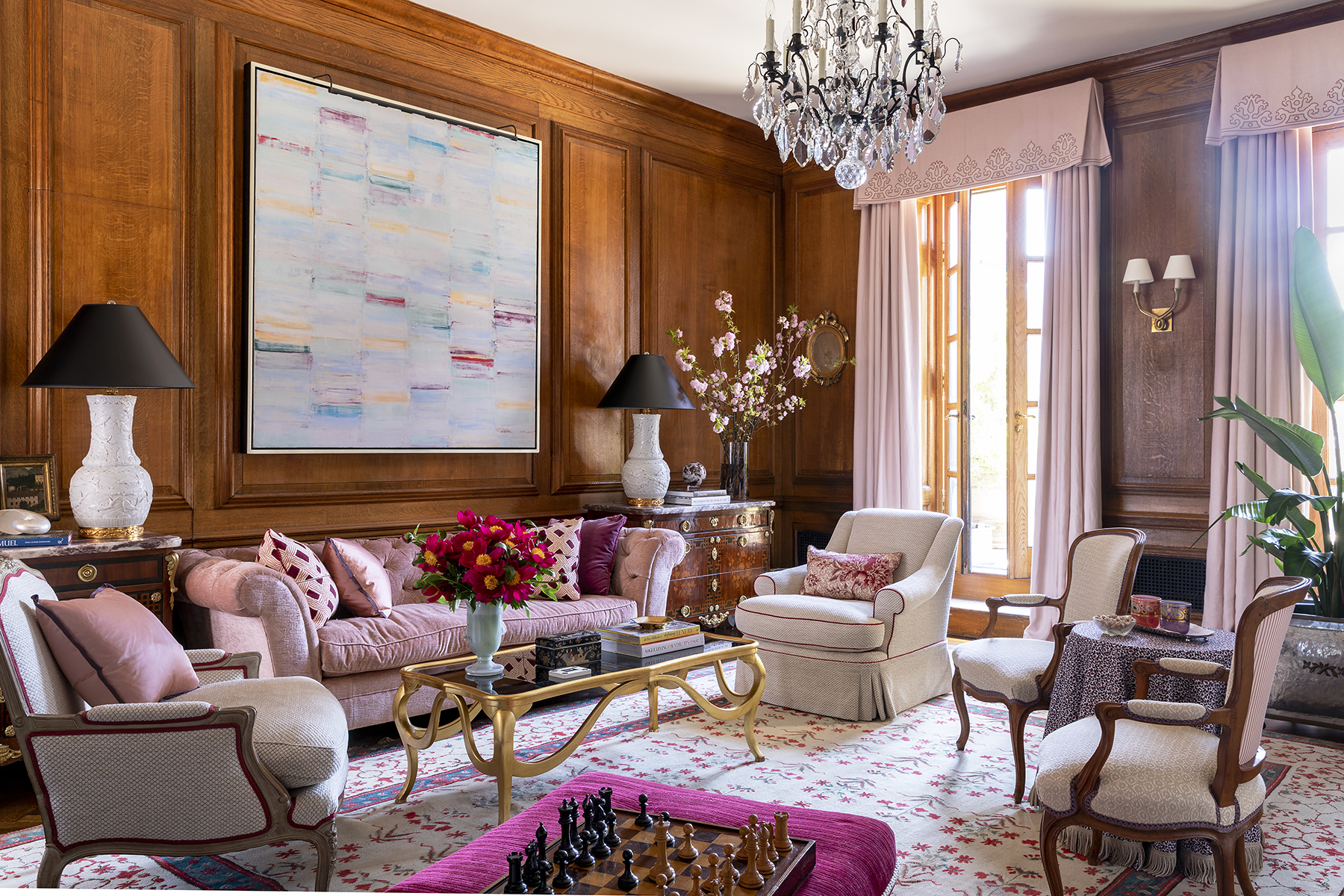
Bill Brockschmidt and Courtney Coleman of Brockschmidt and Coleman designed this sublime living room for clients looking for Parisian flare rendered in shades of pink. Two types of cut flowers, a dimpled sofa cushion and a chess board in midgame are the practical styling details that draw viewers into the space, making it feel lived-in and inviting.
Some Thoughts On Photography
By Carl Dellatore
.jpg)
When designers ask me whether they need to have their work professionally photographed, my answer is always yes. While cellphone images are remarkable, having your work professionally photographed is an essential strategic investment for several reasons. In my view, high-quality photographs of completed projects are essential. In our visually driven industry, potential clients often make decisions based on what they see before they do more research into you and your firm.
For another perspective, I contacted my friend Laurie Lazure, the influential talent behind Interior Design Community, on social media platforms. She agrees, “The best way interior designers can attract better clients is with outstanding photography. Potential clients want to see that you can execute the work, and the only way to translate your craft is with beautiful photos. In the age of AI, true design photos will be even more important for your website and social media.”
Photographs document and preserve your work for posterity. Interior design is a transient art form—design evolves, spaces change, and trends come and go. Photographing your projects creates a lasting record of your creativity and expertise. These images are valuable assets that can be used for marketing, public relations and social media purposes long after the project is completed.
Considering PR: Beautifully photographed interiors provide designers with opportunities for exposure and recognition within the industry. Magazines, design books and online platforms feature stunning interior spaces, giving designers coveted opportunities to showcase their work to a broader audience.
Shelter publications have shifted over my 35 years in our industry, especially as outlets moved to digital platforms. Back in the day (that makes me feel old!), Architectural Digest, Elle Decor and the like had a cadre of photographers they commissioned to create images for the magazine, and the magazine had control over when and where the photos were seen.
Now, a talented photographer not only shoots your work, but also acts as a liaison to any number of magazine editors looking for work to promote on their websites. And there’s a distinct advantage to having your work appear online: While a print magazine is transient, a permalink is forever. When a potential client Googles you, these articles appear in search and reinforce your success.
That brings me back to my work in book publishing. What do I look for when creating a new book?
Interior Design Master Class - from left to right: Designer Madeline Stuart, Photographer Simon Upton and Designer Robert Passal, Photographer Maura McEvoy.
I look for visually captivating, innovative and conceptually rich work. Depending on the book’s theme, I look for work pushing boundaries, challenging conventions and projects demonstrating the current moment in American decorative arts. Originality is critical: I look for projects that offer unique perspectives. Digging deeper, I look for projects that tell a compelling visual story about the client’s lifestyle.
Here, I’m reminded of something the legendary designer Bunny Williams once told me, “What is always important to remember is that rooms are for living, not just for show.” That prompts me to ask an essential photo editing question. Is there evidence of humanity in a space?
Here, a talented stylist can be essential.
Stylists enhance the visual appeal of an interior designer’s work during photography by meticulously arranging furniture, flowers and accessories to create visually striking compositions. They help ensure every detail aligns with the designer’s vision, from adjusting pillows on a sofa to styling a coffee table. With expertise in spatial arrangements, stylists elevate the overall look and feel of the space, collaborating closely with the photographer to capture compelling images.
I’ll give you an example of why I think stylists are key: Several years ago, I was working on an interior design book featuring a subset of emerging designers working in America. One of the designers I chose to include had invested in professional photography, yet the images were missing the human element. Everything was perfect in the photos, and that was the problem. It was difficult to imagine someone living in their spaces. My solution was to ask the designer to consider reshooting the home, which they did, but with a stylist to assist. The spaces came to life—lit candles, flowers on the dining table and two dining chairs slightly ajar as if two dinner guests had just left the table. The stylist left slightly crumpled napkins at those settings, bringing the room to life.
As usual, it’s all in the details.
Stay updated on this series author,
Carl Dellatore, by following his
Instagram. About
Carl Dellatore & Associates – provides designers, architects, and creatives with writing, editing, and copyediting services by an established team to effectively reveal your story.
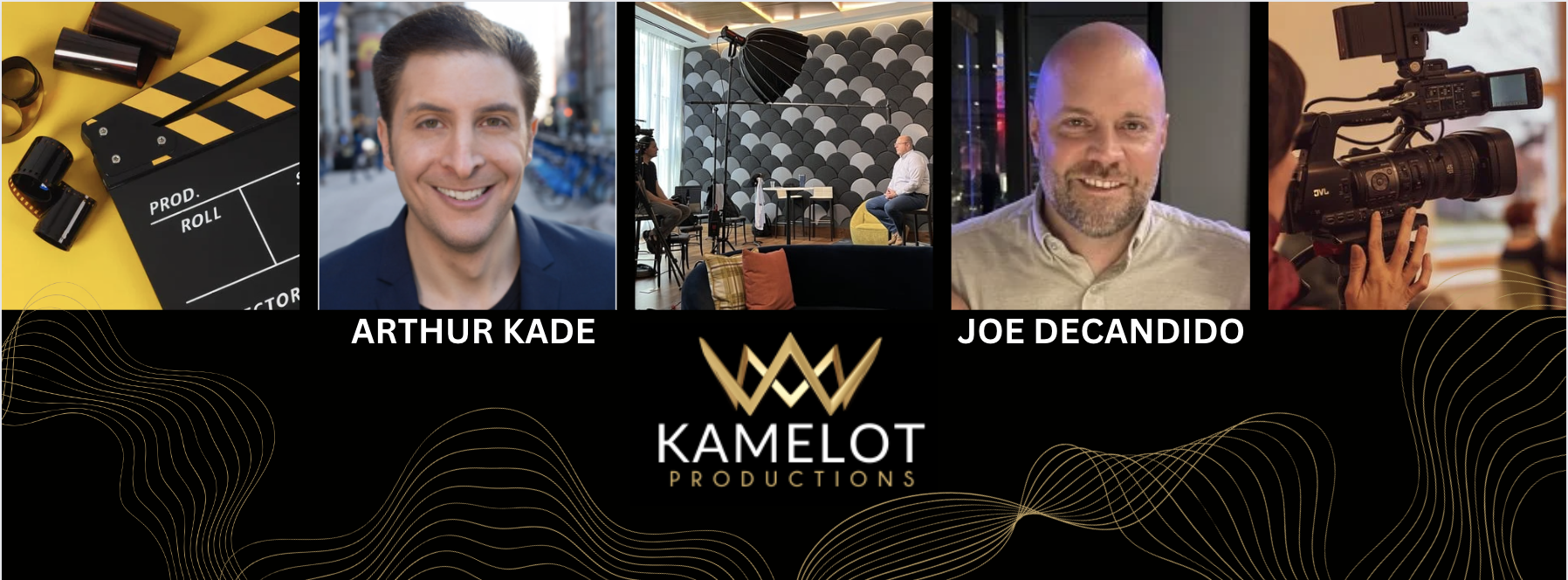
Collaboration Is Key!
Kamelot Productions believes collaboration helps interior designs create dynamic visions of their work
By Lindsay Field Penticuff
For
Kamelot Productions co-founders Arthur Kade and Joe DeCandido, as well as producers of DSA’s
Life by Design podcast series, collaboration is key when it comes to helping ensure an interior designer’s vision is translated effectively into video, capturing the essence of their work.
“It’s how Joe and I have built a successful company,” Kade says. “We collaborate with each other, and we collaborate with our employees, team members and the outside professionals we bring in.”
Founded in 2018, Kamelot Productions is full-service production company. Kade and DeCandido work with clients across all industries, from hotels and hospitality, technology and construction to real estate, fitness, health and wellness.
“It’s a privilege to be able to work with so many companies and so many industries and be able to bring their stories and their visual identity to life,” Kade says. “We are incredibly proud of our content being innovative, very forward-thinking and standing out from a very crowded market.”
Collaboration is important in each and every one of these industries, but with interior design, it specifically helps this group of artistic professionals visually share what they expect to see in a video about their work and business.
“Joe and I are ‘people people,’ so it’s really all about understanding who we are working with and essentially customizing the best process to get them from point A to point B, with point A being the start and point B being creating fantastic content in the most powerful and best way possible,” Kade adds.
We were excited to sit down with Kade and DeCandido recently for an interview. Learn more about their experience and expertise in the Q&A below:
How do you believe video content can enhance the presentation of interior design projects, providing a more immersive experience for potential clients?
Kade: The word immersive is the key word here, because as we know, interior design is a very visual media. It’s about taking something and making it something else, so the beauty of content and us living in the digital age is that we have the capabilities to really bring visuality to life and to be able to showcase the world in a unique and immersive fashion. With interior design, it’s about showing what’s been done, the aesthetic, the style, the pageantry, the design; and there’s no better medium that allows someone to do that—and to be able to tell a story around all those elements.
In a world where virtual communication is prevalent, how does Kamelot Productions go beyond to create unique and engaging visual experiences for interior designers? Can you highlight some innovative approaches you’ve taken in your projects?
Kade: Our process is unique:
Process and customer service model: The first thing we really want to understand in working with an interior designer is who they are and what they do. Being an interior designer is like being an artist … it’s really about how they see the world, and then bringing that world to life through their art. Interior designers in my mind are the same. It’s so important for an interior designer to be able to create content that speaks that to the client, so that the client understands that this is not only why they are doing what they are doing, but understands the true aesthetic, style and philosophy that the interior designer has in order to bring that to life. So, when we work with an interior designer through our process, it’s almost psychologically and artistically understanding who that designer is, where they came from and why they do what they do in order to create the product that they create.
From a client service side: We are second to none! Joe and I are excellent communicators. We make each and every business professional and large corporation feel like they are the most important people in the world when working with them. We take the same approach with the interior designers who we work with, helping them understand that we want their story, philosophies and beliefs to be at the forefront so that when this content is released, they are going to feel like they are expressing themselves through this medium to the people they are trying to express themselves to.
From a technology standpoint: We incorporate something called FPV (first-person view), using a drone. We have an in-house operator who wears virtual reality goggles and we have a whole fleet of mini drones, where we are able to fly interiors and exteriors through the smallest of spaces. For an interior designer, being able to fly a drone inside a space they’ve designed and give people an almost 360 “bird flying through a room” perspective is unlike anything else being done out there right now, and we are able to incorporate an FPV drone throughout all the industries we’ve been able to work with. That FPV drone capability really sets us apart from the competition and allows interior designers to show their product and aesthetic in a way that they normally wouldn’t have been able to show it even five years ago. … It’s an incredible “here’s what to expect” look that can build buzz, generate presales or create any future ROI for a client that they are looking to create.
Interior design often tells a story about a space. How do you leverage the power of storytelling through video to convey the narrative behind a design and create a deeper connection with the audience?
Kade: The key to doing something like is to be able to hear it directly from the designer’s mouth, so being able to sit down with the designer or walk through the space with the designer and actually have them talking about their aesthetic, why they are doing what they are doing, the redesign, etc., and the putting the stunning and powerful visuals over that audio is a very powerful storytelling technique that we’ve used. It’s a concept we call The Guided Tour. We kind of compare it to a two- to three-minute Travel Channel package that we create for a designer to help showcase the story behind the aesthetic and what it has become or will become.
What’s the secret to helping clients feel at ease if they aren’t used to being in front of a camera?
Kade: 99% of people are not comfortable being on camera, so you have to already walk into the experience believing that they are going to be uncomfortable on camera or there’s a lack of media training. What separates Joe and I is our backgrounds. Joe is a marketing aficionado, having spent more than a decade running his own marketing company before founding Kamelot Productions, and I was a television host for 12 years, interviewing celebrities on the red carpet. We are able to take our extensive skillsets and create a comfort level with people so that they understand we are only going to make them look great.
We create a very comfortable environment by coaching them through the process, making them feel safe, heard, seen and, ultimately, editing them at their best, so that when they see the finished product, they think, “Wow, I really do look great!” Our goal is to never make anyone look worse than 100% of the best they can look like, and we do a fantastic job doing that. We always put people at ease, saying that the process is going to be seamless and that we are going to make you feel comfortable, and we show them examples and they trust that they are working with excellent professionals who are going to make the process a win for them.
Video has the potential to captivate and engage audiences. How can interior designers leverage Kamelot Productions’ expertise to create videos that effectively communicate their unique style, attracting and retaining clients in a competitive market?
Kade: It’s about asking the right questions. Through the prep work and our process, and getting to know the designer, we have a pre-production meeting, and we ask a certain amount of questions, almost like a therapy session, where we want to understand the internal workings of the designer, what their training was, what they believe, what their likes are, how they approach creating the aesthetic they are approaching. We really get to know then as individuals, as well as artists. From there, when we are putting them on video—and because we have all that pre-knowledge—we are able to ask the right questions and bring the best out of them to gain the best knowledge necessary to showcase all the elements we named in a video.
What kind of response have you gotten from organization/individuals when you’ve been able to bring this pretty unique technology (like FPV) to the table for them to help illustrate their story in a more unique way?
Kade: The response is overwhelmingly positive. Most people think we’re going to bring in a camera crew and interview them, and it’s just going to be a couple of camera people in there. But when they see us in there, almost like we’re staging a movie scene, staging people in scenes and flying the drone around people and through them, and flying it around the office like a bird, there’s an overwhelming cool factor that plays into that. People think it’s so cool and say they never realized a drone can be used this way.
Then, when they see the mobility of the drone and the flexibility of how we’re able to fly through the smallest of spaces, circle people, fly through them as they are talking or working out, then they see the finished product, people are absolutely blown away. And because of that, it’s one of the many factors that has helped us expand our company at such an exponential pace, because they feel like we are cutting-edge.
In a competitive market, standing out is crucial. How can Kamelot Productions assist interior designers in crafting videos that not only showcase their talent but also help them differentiate themselves from others in this rapidly growing industry?
Kade: It’s the same way an interior designer creates something different inside someone’s house. We have a unique aesthetic and style, and the ability to bring different types of visuals and storytelling to life. … We want to create video that is going to showcase their story, their aesthetic, their history, their experiences, their philosophies, all the things that make them who they are in the most cinematic and powerful vehicle possible.
As video production experts, what trends do you anticipate in the future of design-related video content?
Kade: As far as technology that’s around the corner, it all starts with AI. It’s changing the world. When it comes to what we are doing with content, I think the next three, five, 10 years with everything happening in AI, we are going to see advancements in how to create content, how to utilize content and how to best place content to get the maximum viewership, and it’s our job as professionals in this business to stay on top of those trends so that our clients are getting the best content and in the best ways to use it possible.
How do interior designers leverage these trends?
Kade: Following us Instagram—
@kamelotproductions—is a great start, because we continue to evolve and they’ll see everything we are doing. … By following our Instagram account, it gives interior designers a chance to see different styles, different types of filming, different graphics; anything we are doing.
Are video production services like Kamelot Productions’ feasible for all interior designers—even those who just started their businesses?
DeCandido: Sometimes, people will look at their business or the size of their projects and not think their business is big enough for this, but I would encourage anyone to reach out to us and have a conversation. We will talk to anyone about their content needs, wherever they are in the country or world. We work with businesses and professionals of all sizes, and we try our very best to be mindful of the cost and not make it prohibitive to work with us. We’d love to set up an exploratory conversation.
Share the full Q&A with others
here!
 Video Production Can Help Enhance an Interior Designer’s Work
Video Production Can Help Enhance an Interior Designer’s Work





.jpg) When designers ask me whether they need to have their work professionally photographed, my answer is always yes. While cellphone images are remarkable, having your work professionally photographed is an essential strategic investment for several reasons. In my view, high-quality photographs of completed projects are essential. In our visually driven industry, potential clients often make decisions based on what they see before they do more research into you and your firm.
When designers ask me whether they need to have their work professionally photographed, my answer is always yes. While cellphone images are remarkable, having your work professionally photographed is an essential strategic investment for several reasons. In my view, high-quality photographs of completed projects are essential. In our visually driven industry, potential clients often make decisions based on what they see before they do more research into you and your firm. 